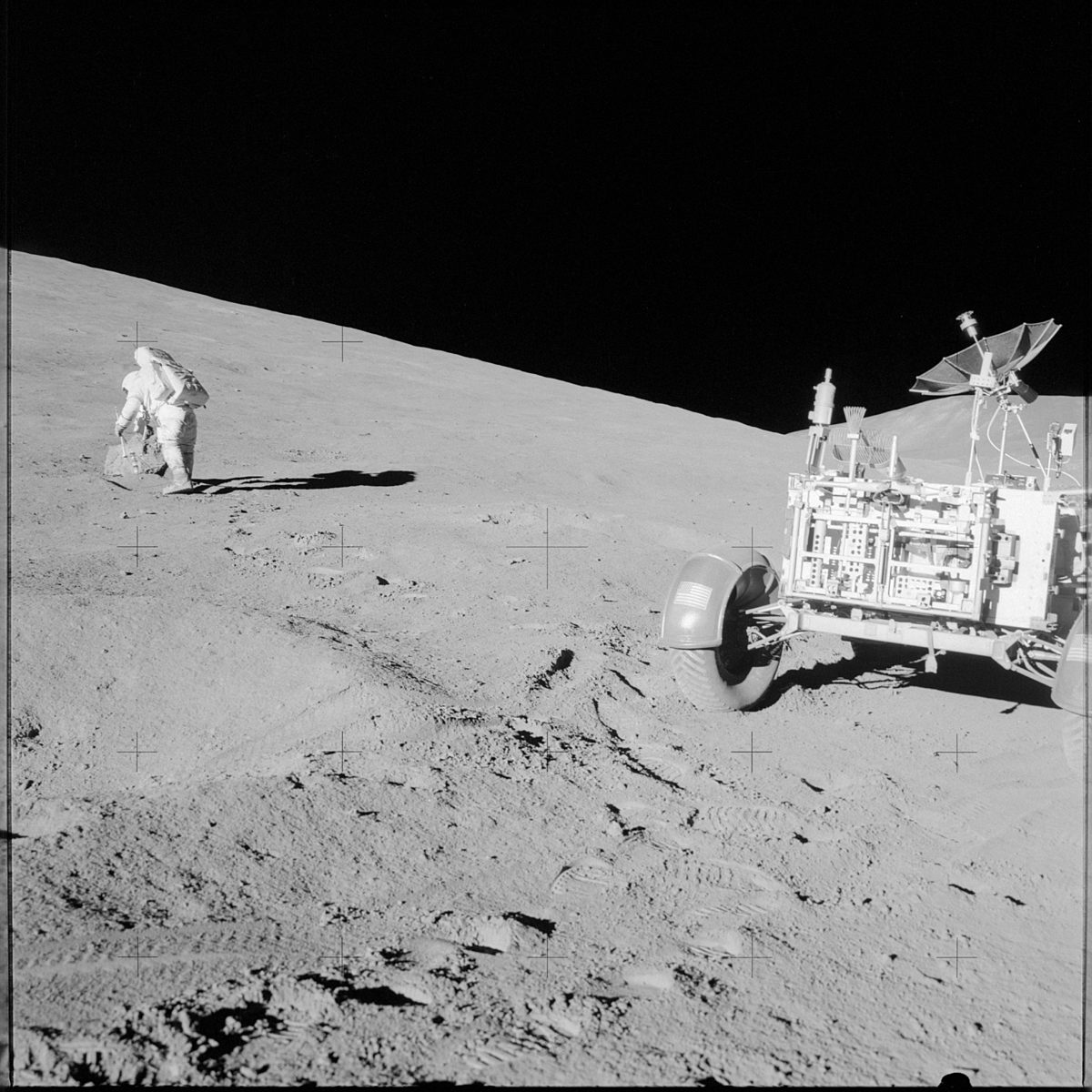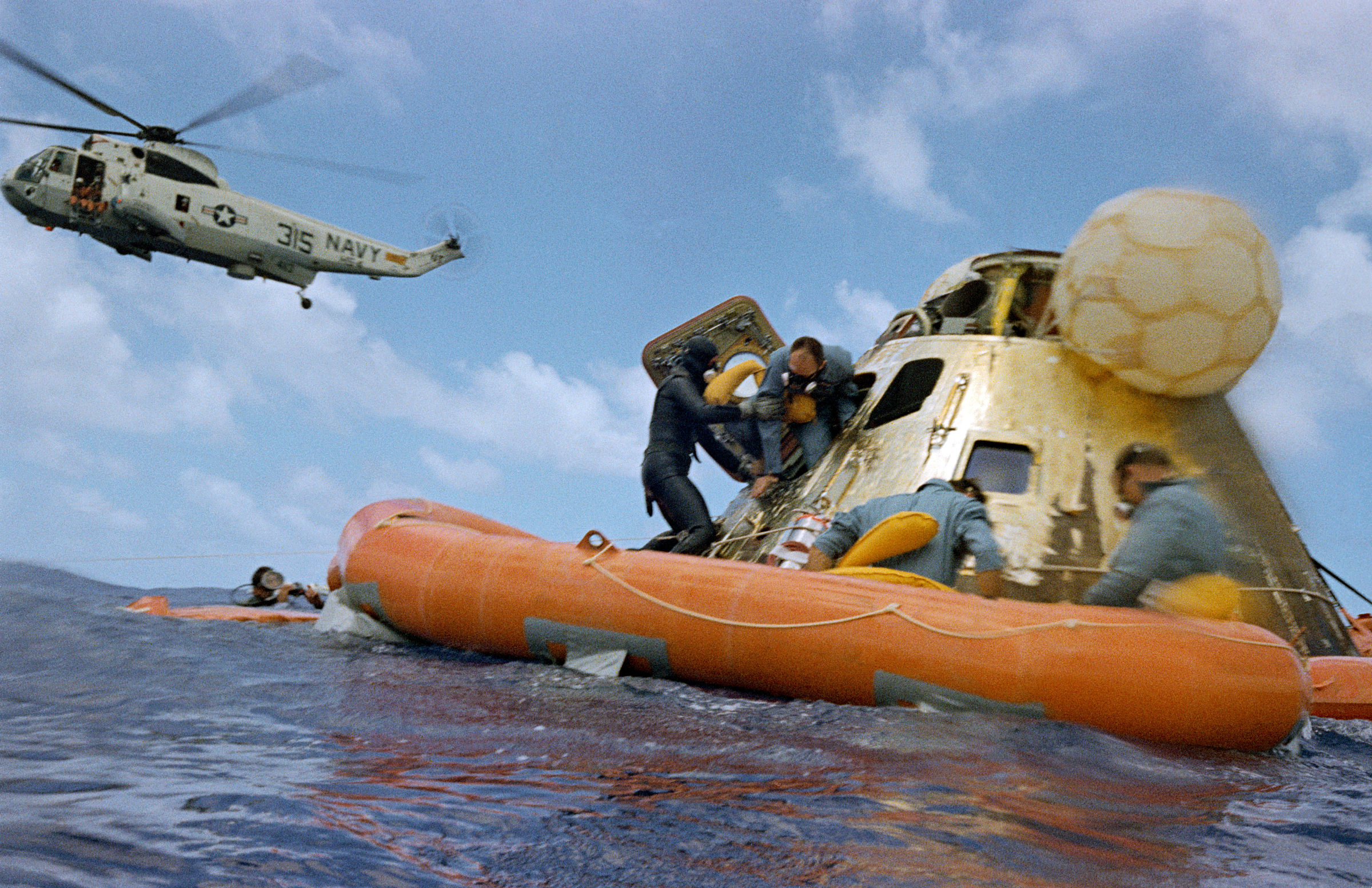Apollo 12 was the second mission to land humans on the Moon. NASA astronauts Pete Conrad and Alan Bean landed in Oceanus Procellarum, the "Ocean of Storms," on 19 November 1969 while Richard Gordon remained in lunar orbit inside the Apollo command and service module. Conrad and Bean made a pinpoint touchdown near NASA’s robotic Surveyor 3 spacecraft, which had landed 2 years earlier.
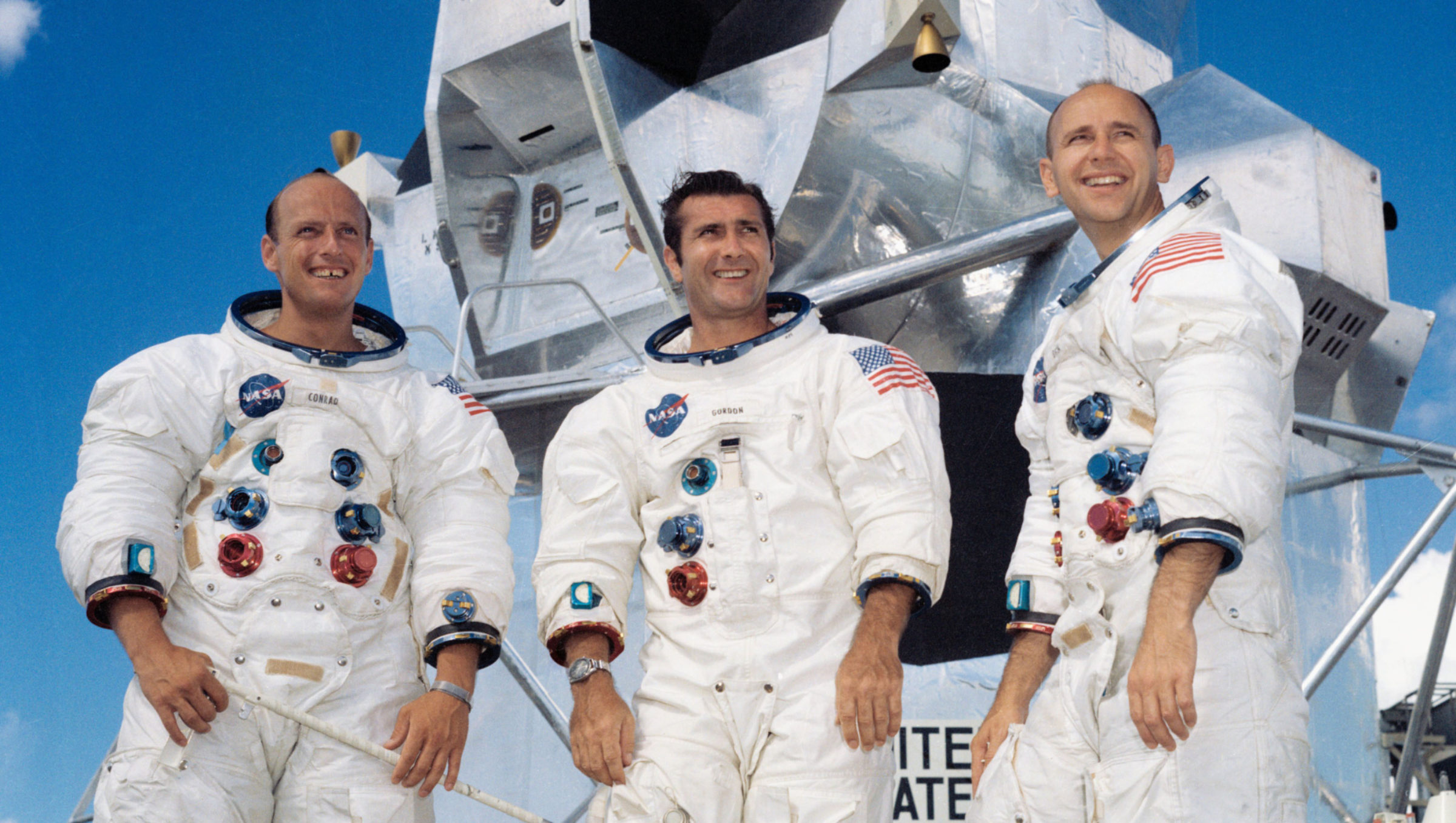
The Apollo 12 crew launched from Cape Canaveral, Florida on 14 November 1969 into rainy skies. Lightning struck their Saturn V rocket twice during ascent, knocking out the crew’s altitude control indicators and switching power for the command and service module from fuel cells to batteries. A quick-thinking flight controller prevented an abort by recommending the crew flip an obscure switch in the command module: "Try SCE to AUX." Power from the fuel cells was eventually restored and the crew safely reached Earth orbit. After a thorough checkout of their vehicle for any permanent damage, they ignited the Saturn V upper stage and departed for the Moon.
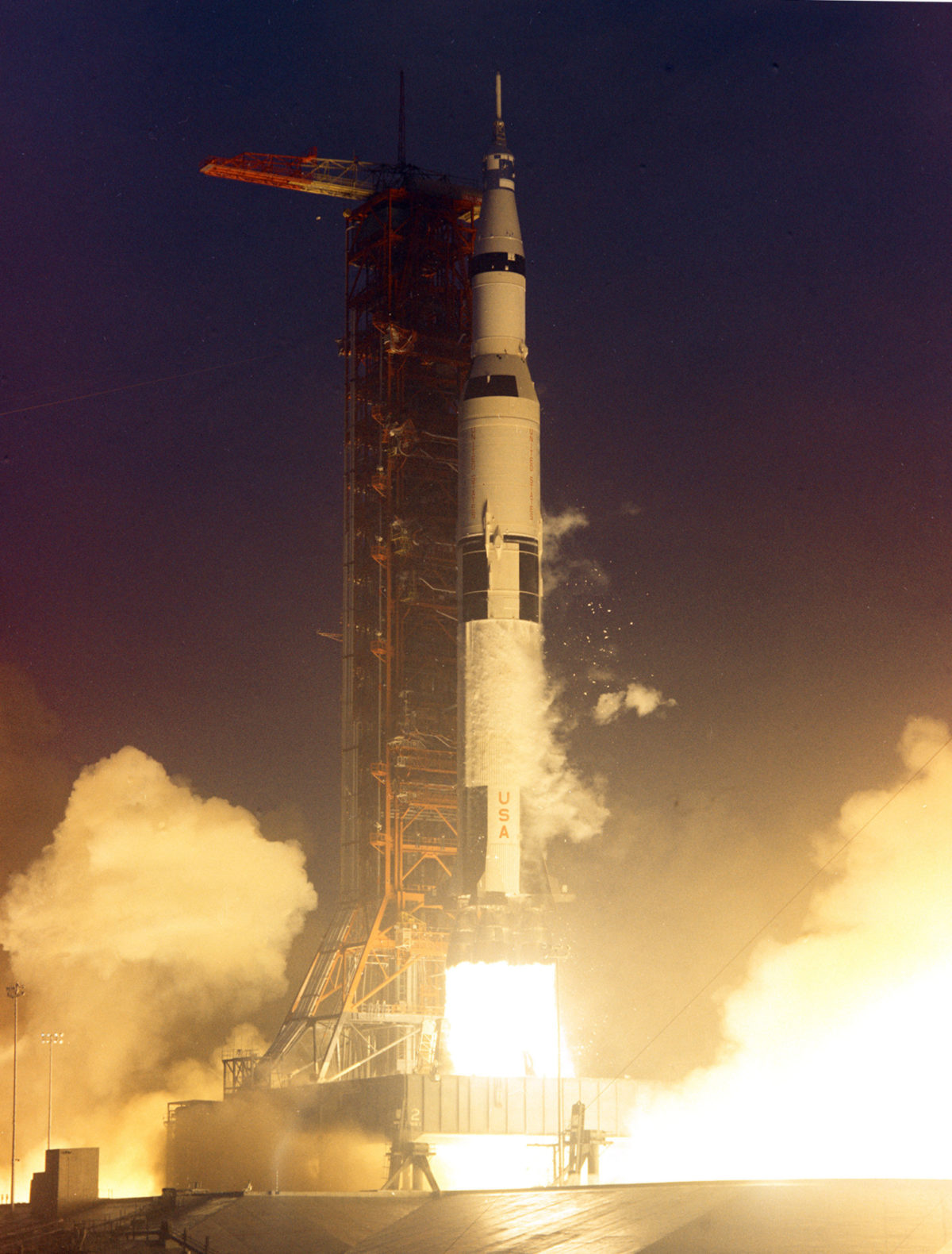
During the history-making landing of Apollo 11 four months earlier, astronaut Neil Armstrong had to take semi-manual control of the lunar module and steer it away from a hazardous boulder field and crater, ultimately touching down more than 6 kilometers away from his intended target. NASA wanted Apollo 12 to demonstrate a pinpoint landing so that it could send future Apollo crews to harder-to-reach scientific destinations. Fortunately, a lunar scientist named Ewen Whitaker had found the precise location of the Surveyor 3 spacecraft, giving the astronauts a target. Bean and Conrad successfully landed their lunar module about 160 meters away from the probe.
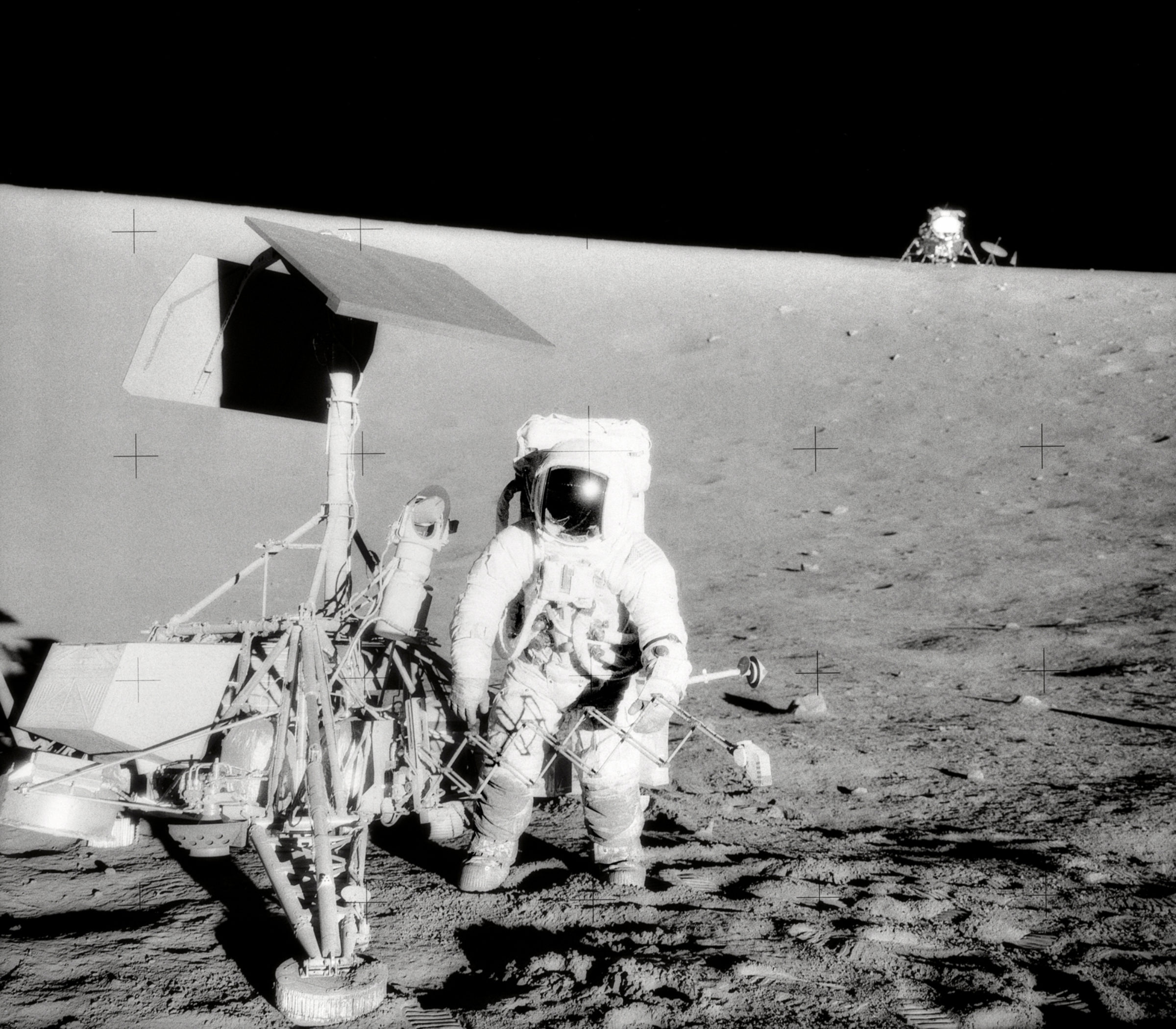
The astronauts performed two 4-hour moonwalks during their 32-hour stay on the surface. For the first excursion they collected surface samples and deployed the Apollo Lunar Surface Experiment Package, or ALSEP. The ALSEP included instruments to measure the Moon’s atmosphere (Cold Cathode Gauge), magnetic field (magnetometer), and interior (seismometer), as well as the solar wind (solar wind spectrometer). During their second trip outside the lunar lander, they visited Surveyor 3, removed its TV camera, and stowed it in the lunar module for return to Earth. Scientists later found bacteria inside the camera that may have survived 2 years in space, though some studies have suggested the bacteria got inside the camera after it was returned to Earth.
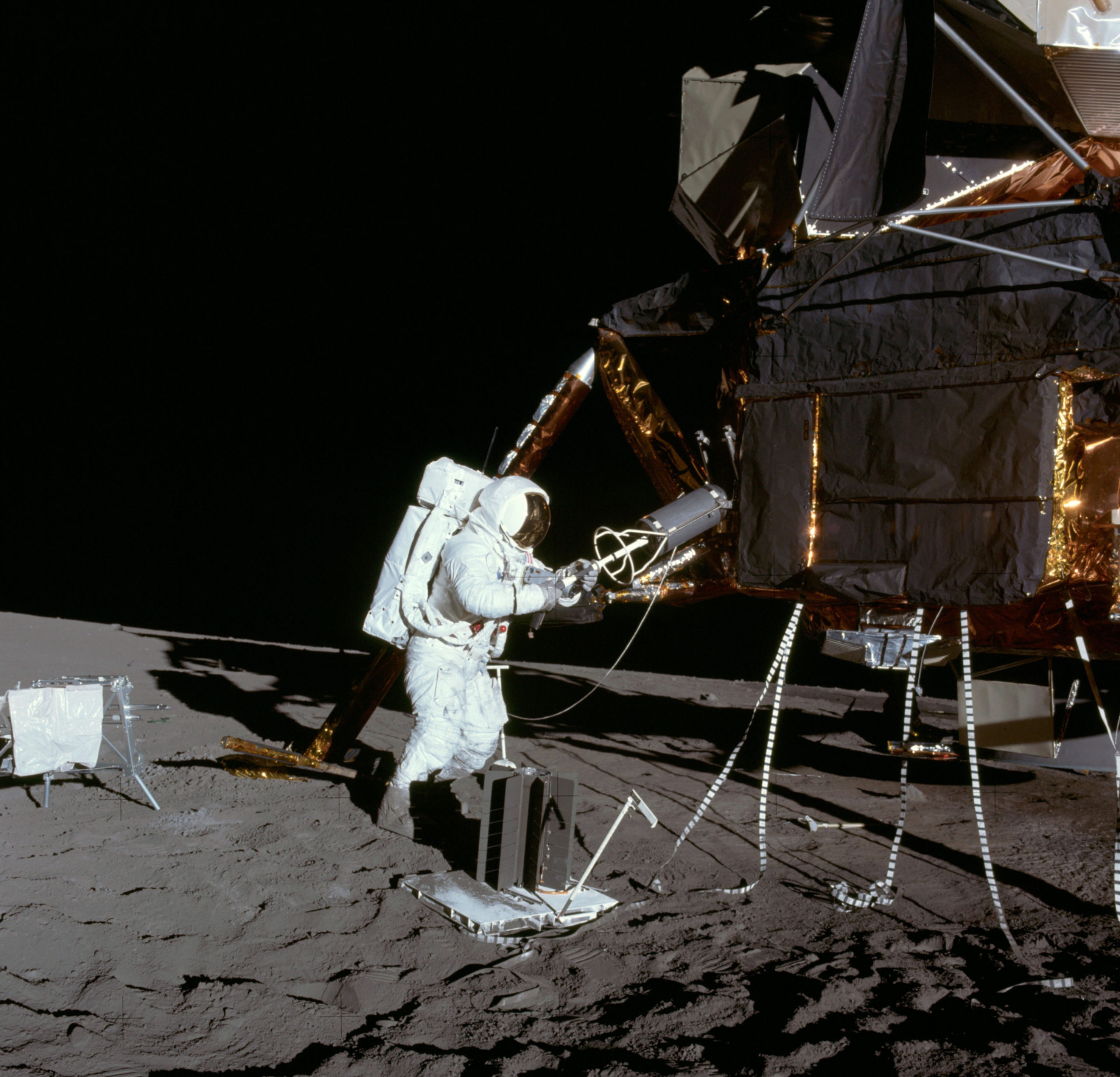
Conrad and Bean blasted off from the Moon in their ascent module and rendezvoused with Gordon in lunar orbit. The trio’s return trip to Earth was uneventful, ending with splashdown in the Pacific Ocean on 24 November.
"Man, that may have been a small one for Neil, but that's a long one for me."
—Pete Conrad, after his first steps on the Moon
Apollo 12 Cost
NASA estimated the following direct costs for Apollo 12. Full costs of the Apollo program can be found on the "How Much Did the Apollo Program Cost?" page.
| original $ | inflation adjusted $ | |
|---|---|---|
| Command & Service Module | $55 million | $463 million |
| Lunar Module | $40 million | $337 million |
| Saturn V Launch Vehicle | $185 million | $1.6 billion |
| Apollo Lunar Surface Experiments Package (ALSEP) | $25 million | $211 million |
| Operations | $70 million | $589 million |
| Total | $375 million | $3.2 billion |
Inflation-adjusted to 2019 via NASA's New Start Index (NNSI). Source: "History of Manned Space Flight." February 1975. NASA Kennedy Space Center. Located in NASA HQ Historical Reference Collection, Washington, D.C. Record Number 18194. Box 1.
Resources
Project Apollo
Starting with Apollo 7 in 1968 and culminating with Apollo 17 in 1972, NASA launched 33 astronauts on 11 Apollo missions. Twelve humans walked on the Moon.


 Explore Worlds
Explore Worlds Find Life
Find Life Defend Earth
Defend Earth


